We all know that sugar isn’t great for us. There are the common reasons that everyone is aware of – the impact on our teeth, weight gain, and energy crashes – but there are a few reasons why sugar is particularly important to avoid if you have cancer, are wishing to prevent a recurrence, or are working to prevent it in the first place.
This was terribly depressing news when I was first diagnosed and doing research on the best anti-cancer diet. I was a full-blown sugar addict prior to diagnosis. I had some sort of sugary treat pretty much every day like cookies, ice cream, or pastries, and I always had a bag of sour candy of one type or another in my house. Needless to say, I was a little more than begrudging in my decision to cut out sugar. I knew finding some healthier alternatives was going to make the transition much easier, so I set about finding out which were the best ones, both in terms of taste and effect on my body.
What’s so bad about sugar?
Cancer cells prefer the Warburg Effect to generate energy, which refers to the observation that they prefer anaerobic respiration (the creation of energy via the metabolism of glucose and which does not require oxygen), rather than the aerobic respiration preferred by normal cells (the creation of energy using glucose and oxygen). Because cancer cells replicate so quickly and use anaerobic respiration, they need a lot more glucose than healthy cells do. There is a ton of research about cancer cells and sugar, and just the negative effects of sugar in general, that are being discovered. In fact, one study on mice found that 50-58% of those who had been fed a sugar-enriched diet had developed mammary (breast) tumours compared to only 30% in the control group. Additionally, the average tumour weight was 50mg higher in the mice who had been fed more sugar, suggesting that sugar not only caused a quicker onset of the initial tumour growth, but also increased the rate at which the cancer cells replicated and the tumour grew (1).
Aside from its increased need for glucose, the effect of sugar on cancer cells is also often attributed to how it can cause inflammation in the body, which can contribute to the development of cancer through effects such as sustained cell replication, increasing the levels of growth factors in the surrounding tissues, and causing changes in the surrounding cells (2).
I recently became aware of yet another reason to avoid sugar, and this one is particularly applicable to those of us with hormone imbalances and hormone driven cancers. Sex hormone binding globulin (SHBG) is a glycoprotein produced by your liver. It binds to three different sex hormones in both men and women and carries them throughout your body: estrogen; dihydrotestosterone (DHT), and testosterone (3). It plays a major factor in whether they are protein bound and not useable by your body or are in a free state where they can be picked up by hormone receptors (4).
When there is too much sugar in your body, your liver converts it to lipid. A recent study found that an increase in lipid production actually shuts down the SHBG gene, therefore reducing the amount of SHBG that a person has in their bloodstream. If there is less SHBG protein, then less testosterone and estrogen will be bound to these proteins because there won’t be as much for them to be bound to. What then occurs is an increase in sex hormones being in a free state, meaning that there will be more hormones available to be absorbed by your cells. What that can lead to is estrogen or testosterone dominance and a whole host of issues such as infertility, certain cancers, and cardiovascular disease, among others (4).
Sugar Alternatives
It is hopefully clear by this point why you should eliminate processed sugar from your diet and limit other sugars such as fructose. So, what is a poor sugar addict to do? Luckily, there are some pretty good replacements out there!
Honey and Maple Syrup
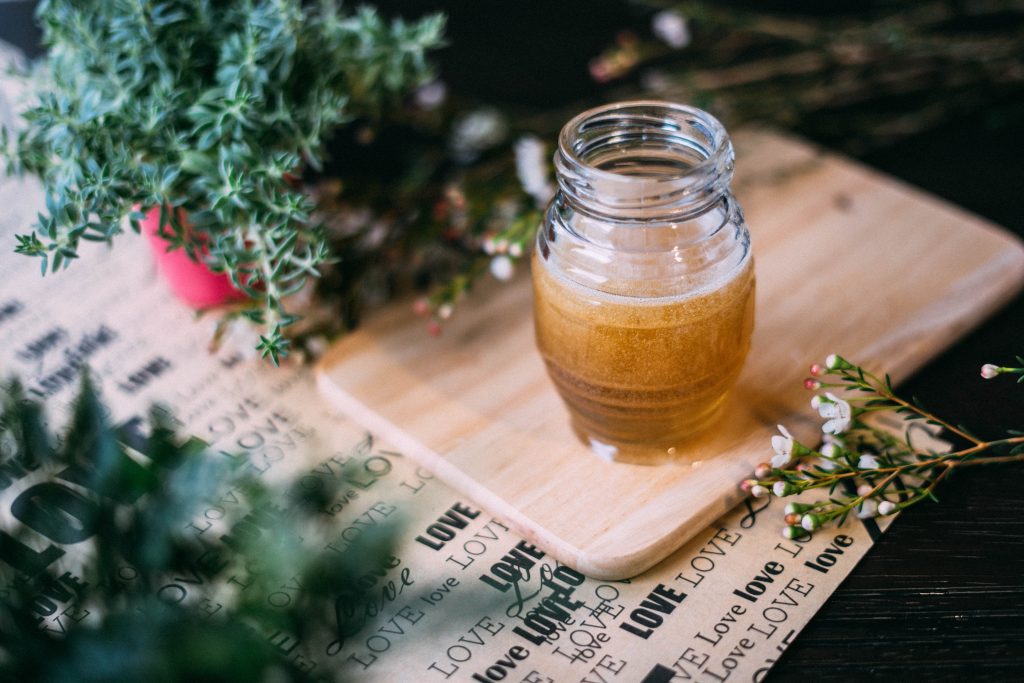
These two are many people’s go-to for sugar replacement. They are natural and definitely sweet. They can be easily substituted for sugar in recipes, and they are both readily available. Not to mention, they are darn delicious! They also both have low glycemic indexes, meaning they won’t contribute to a blood sugar spike. They are, however, pretty high in fructose, so these are two that you will want to limit your intake of. If a recipe calls for a lot of sugar, you may want to combine honey or maple syrup with one of the other options I discuss here; that way, you will still get the deliciousness of these sweeteners, but will cut down the fructose level a bit. The recommendation I received was to keep my sugar intake (fructose and other natural sugars) to 25g a day. A teaspoon of honey has 6g of sugar and the same amount of maple syrup has 5g, so keep these amounts in mind when you are adding either of these tasty goops to your diet. It would also be my advice to get organic maple syrup and wild, unpasteurized honey.
Coconut Sugar
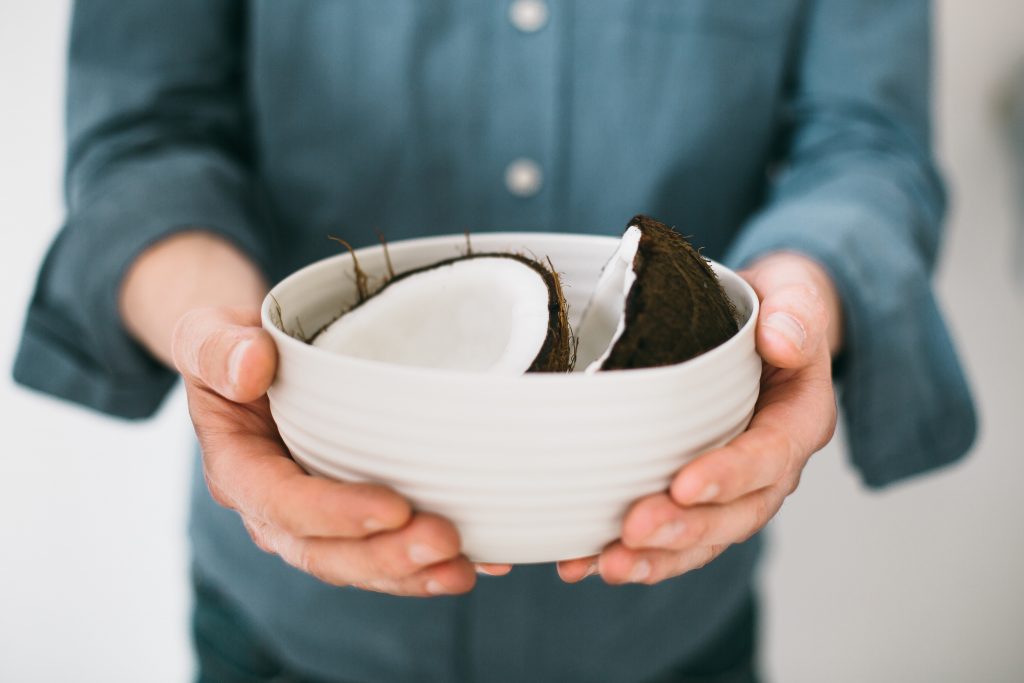
Of all the sugar substitutes, coconut sugar has got to be my favourite for baking. It tastes and looks very much like brown sugar, and it can be used 1 to 1 for sugar in recipes, making it much easier to bake with than any of the other sweeteners I discuss here. Coconut sugar is ranked as a low-glycemic sweetener just like honey and maple syrup, meaning it won’t cause the same crazy blood sugar spikes that standard sugar will. Coconut sugar, also like honey and maple syrup, is pretty high in fructose however, with one teaspoon having 4g of sugar. Although it is a much better choice than white sugar when it comes to your blood sugar levels and inflammation, it is definitely one that you want to limit as well. Eating high levels of fructose (such as in high-fructose corn syrup, one of the drivers of the obesity epidemic in North America) can lead to some pretty nasty health effects such as weight gain, heart disease, premature aging, and non-fatty liver disease (5). While these are connected with very high levels of fructose and should not discourage you from eating healthful foods like fruits, it is important to remember that added sugar is added sugar, and it should be limited; keep in mind the 25g a day recommendation that I received and include things like coconut sugar in that tally.
Stevia
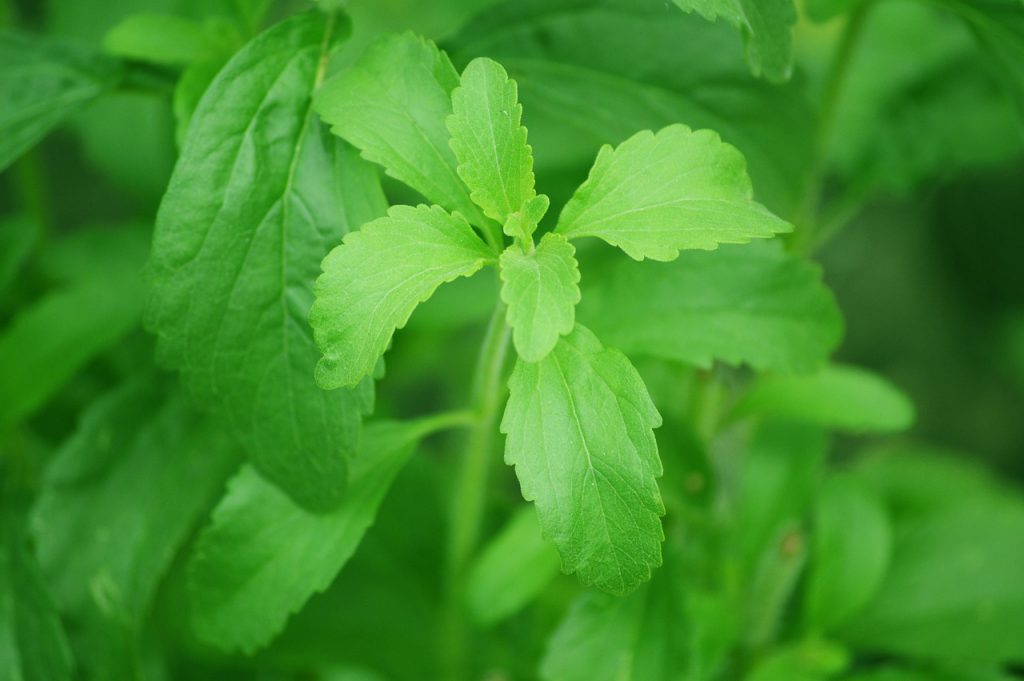
Stevia comes from the stevia plant, a bright, leafy plant that is native to South America. You can actually just pick the fresh leaves and chew them or add them to recipes! It is remarkable how sweet their green leaves are. A study found that stevia reduced post-meal levels of both glucose and insulin in participants, suggesting that stevia may help to regulate healthy glucose levels (6). At the very least, stevia does not cause the rapid blood sugar spikes associated with processed sugar, and it is therefore a much better option when your sweet tooth starts making its presence known. Stevia is much sweeter than sugar, 10-15x sweeter in fact, so alterations need to be made when baking with it. How much to use in a recipe depends on the type of stevia you get; for every cup of sugar that a recipe calls for, you only need to use ⅓-½ teaspoon of stevia extract powder or 1 teaspoon of liquid stevia (7). The only thing some people don’t like about stevia is the aftertaste. It does taste a little bit like aspartame, and this freaked me out at first because we all know how bad aspartame is. However, my mom grew a little stevia plant and I tried one of the leaves when I was visiting her. The leaves tasted exactly like the powder, aftertaste and all, so that made me feel much better about it; it really is just the way the plant tastes and not a result of extreme processing or something similar.
Monk Fruit Sweetener
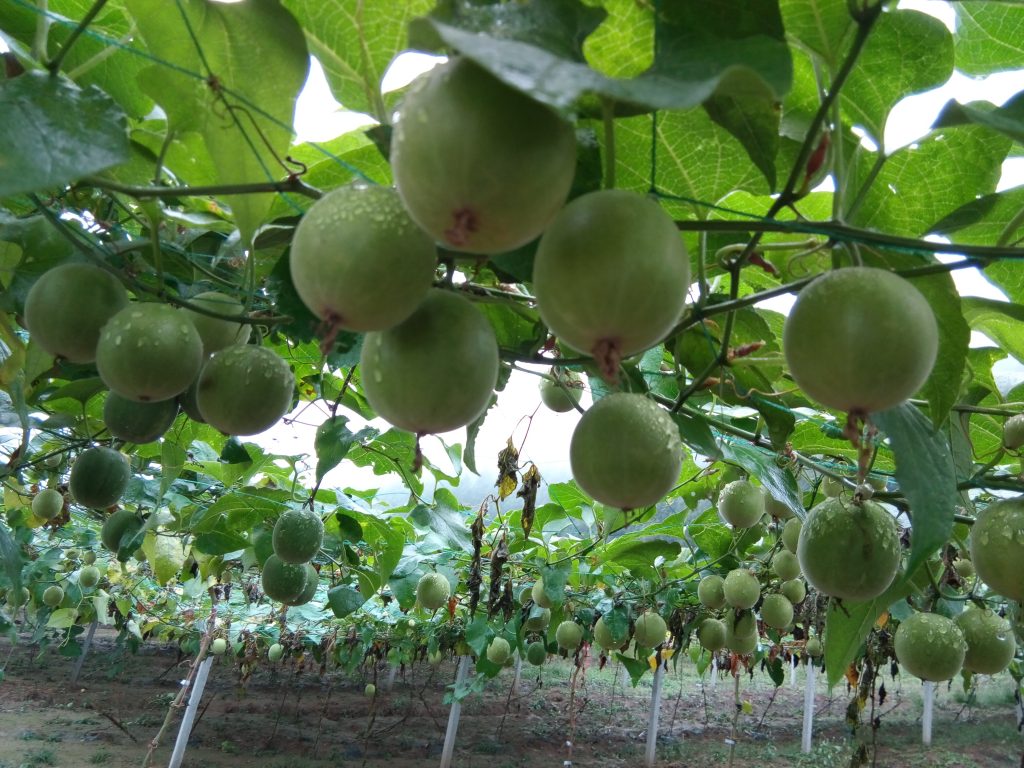
Monk fruit sweetener comes from just that, monk fruit! Native to China and Thailand, monk fruit are small, greenish-brown fruits that look almost like small, oblong gourds. When in powder form, monk fruit has a similar look and feel to stevia powder, fine and white. There is no sugar in monk fruit sweeteners and, like stevia, it has a glycemic index of zero, meaning it will not have an effect on blood sugar, such as intense spikes (8). Just like stevia, monk fruit can have a bit of an aftertaste, but again, this is naturally occurring and not the result of processing. Monk fruit is even sweeter than stevia, up to 150x sweeter than sugar, and so manufacturers often mix it with other ingredients to cut this down. With this in mind, it is important to look at the label of any monk fruit sweetener you buy to ensure you aren’t also getting harmful artificial sweeteners like aspartame (what is in diet sodas) or sucralose (what is in Splenda). The safest mix-ins are often inulin fibre and silica (something that is naturally occurring in our bodies), so ideally look for a monk fruit sweetener that contains only monk fruit extract and inulin/silica. This is also the case for stevia as well.
The Best Choices
The best choices when it comes to finding a sugar replacement are monk fruit sweeteners and stevia when they are organic and free from harmful fillers. They are somewhat difficult to bake with however, and their aftertaste is off-putting to some people. I personally don’t mind the taste of either, and I use both of them most often for day-to-day use such as in coffee or tea. When it comes to baking, coconut sugar is my go-to, and honey and maple syrup make an appearance in my baking and other treats as well. These are definitely for more limited use however, and would be counted towards your 25g per day limit.
With these suggestions, it is my hope that you can seriously cut down if not eliminate your intake of processed, white sugar. The first couple of weeks might be hard, but I promise that it gets easier as sugar makes its way out of your system! And having some low-sugar or sugar-free options around will definitely make that transition easier.
Happy Healing ❤️
References
- https://www.ncbi.nlm.nih.gov/pmc/articles/PMC4703949/
- https://www.healthline.com/nutrition/sugar-and-inflammation
- https://www.urmc.rochester.edu/encyclopedia/content.aspx?ContentTypeID=167&ContentID=shbg_blood
- https://www.sciencedaily.com/releases/2007/11/071109171610.htm
- https://www.ncbi.nlm.nih.gov/pubmed/16366738
- https://www.ncbi.nlm.nih.gov/pmc/articles/PMC2900484/
- https://www.livestrong.com/article/283456-how-to-bake-with-stevia-instead-of-sugar/
- https://www.medicalnewstoday.com/articles/322769.php

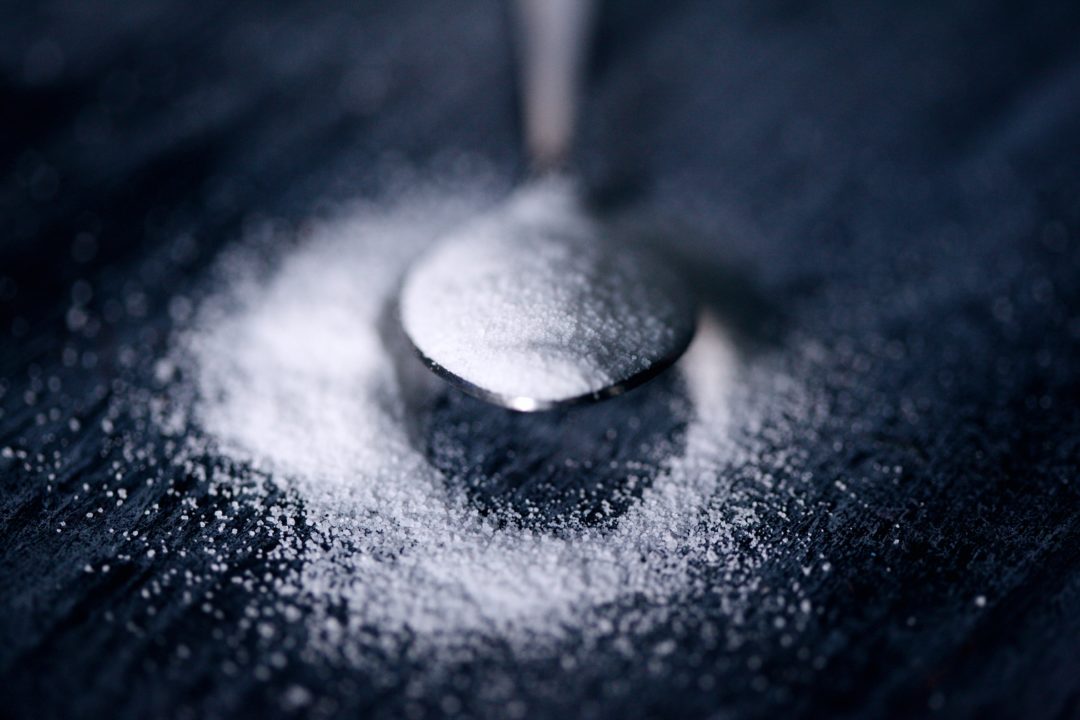


0 Comments